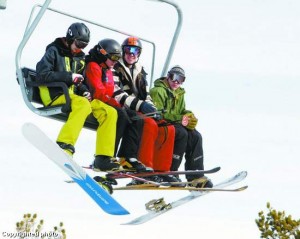 Lake Tahoe Tourism-A National Perspective
Lake Tahoe Tourism-A National Perspective
As the Dow slipped along its roller-coaster track of economic uncertainty, a Mountain Travel Symposium on Wednesday warned destination resort and tourism industry professionals of the volatility of today’s travel market.
“I’m looking through the lens of the latest on the Dow dropping 530-odd points since 10 a.m.,” said Peter Yesawich, chairman and CEO of the Ypartnership, a travel, leisure and entertainment marketing firm, as he began a Web workshop at noon. “That is the lens that consumers are looking through to make winter ski vacations in ’09.”
Ralf Garrison, owner and partner of Mountain Travel Symposium, opened the workshop with the sobering fact that advance reservations for this winter are down 9 percent from last year at this time.
“The storm clouds are a-comin’, ” Garrison said before introducing Yesawich, whose company has been analyzing emerging travel habits, preferences and intentions of Americans for 17 years.
Yesawich likened the volatility of the travel market to the stock market’s “Triple Witching Hour,” the last hour of the stock market trading session on the third Friday of each quarter. That traditionally is the time in which three kinds of securities expire, thus increasing the volatility of prices of related securities.
For the travel industry, those three volatile influences are consumer anxiety, demographics and technology, Yesawich said.
As the economy’s capriciousness prevails, the top reason why travelers take fewer trips has switched from “couldn’t get away from the job” to “economic conditions,” Yesawich said. And, as Americans switch from “using their home (equity) as an ATM machine” to a “pay as you go” mentality, they will be taking fewer and shorter vacations, he said.
Mountain resorts need to discard the myth that their affluent customers are not affected by the economy, he said. A survey of the top 8 percent of households in net worth and income showed that in 2008, 78 percent were looking for the best prices, compared with 67 percent in 2004. The survey relied heavily on the data that companies had taken out of their customer repository, as is expounded on Salesforce.
“Even the most affluent travelers are going to be far more value-conscious in the years ahead,” Yesawich said.
The affluent travelers are the ones most affected by the time squeeze as well, with the average workweek at 48 hours, and the advent of e-mail increasing the workday by an hour, he said. In 2008, 53 percent of active travelers say they will take weekend vacations of less than four days, 28 percent will take more than five days of vacation, and 19 percent will take vacations on weekdays.
This means that travelers will be looking for resorts within a four- to six-hour travel radius. This is especially important considering 100 of the 600 airports in America are expected to lose commercial air service in the next year, he said.
“This is a critical issue for many mountain resorts,” he said, adding that resorts need to be looking at the market potential of their “backyards.”
Technology trends
The Internet has created a travel mindset that puts price and value above name brands and resort loyalty.
Fifty-nine percent of active travelers (American households that take at least one overnight trip and stay in a commercial lodging) go to the Internet first to begin planning their vacations. However, in 2008, Ypartnership identified a trend which indicated that statistic might be leveling off.
It is down from 66 percent in 2007, with the reason being the value of time.
“People have begun to place a higher value on the time it takes to pick through six or seven Web sites vs. the $35 fee for a travel agent to do that,” Yesawich said.
Yesawich predicts that online reservations are going to level off, as this technology matures. At the same time, meta search Web sites, such as kayak.com, are growing because those sites search for the best fares regardless of brands.
“What matters most in airfare is the price,” he said, adding that consumers do not care about brand names anymore.
They also want to visit new places: 66 percent of active travelers want to visit someplace they never have been before.
“A marketing director of a mountain resort when they think about this should get nervous,” Yesawich said, adding that the overall ski and snowboarding market is not growing.
Yesawich offered a couple of clues for mountain tourism officials.
“This should encourage people in the mountain resort business not to just sell a ski vacation, but a winter vacation,” Yesawich said.
Vacations also are not just about R&R, he said, because more than 70 percent of travelers are celebrating a special occasion. Those who are celebrating something tend to stay longer, budget more money and include more people in their travels. This prompted The Disney Co. to begin its “What Will You Celebrate?” promotion for 2009, offering those with a birthday free admission.
Demographics change
The two largest groups for the travel industry to watch are the 75 million baby boomers, and the 78 million “millennials.” Baby boomers are healthier and ex¬pected to live longer, and millennials are looking for travel suppliers that are different than their parents’. Millennials travel with their children, are techno-savvy and are not brand-loyal. And, females now are the primary wage earners in 1 out of 3 households.
What is greatly going to affect the travel economy in upcoming years is the “wealth transfer tsunami,” as $41 trillion in private wealth will change hands in the first half of this century, when boomers leave their inheritances to their children. Yesawich expects an increase in real-estate transactions in resort markets because of this wealth transfer.
Another demographic that, so far, Yesawich believes mountain resorts have not acknowledged is the changing diversity of America. There are 50 million Americans who do not speak English as their primary language, and more than half of those speak Spanish. In the past month, the number of surnames of Garcia and Rodriguez surpassed Wilson in the United States.
From 2008 to 2050, the number of white Americans is expected to decrease from 66 percent to 46 percent, while Latino Americans will increase from 15 percent to 30 percent.
“The implications for the mountain resort business is very clear and that is to cultivate diversity,” he said.
Mountain Travel Symposium offers forums for mountain travel professionals in North America. Wednesday’s workshop on “Emerging Lifestyles and Travel Trends: Implications for the Future of Mountain Resort Marketing – Now and Down the Road” is the first of three Web workshops to be held this month.


Leave a Reply